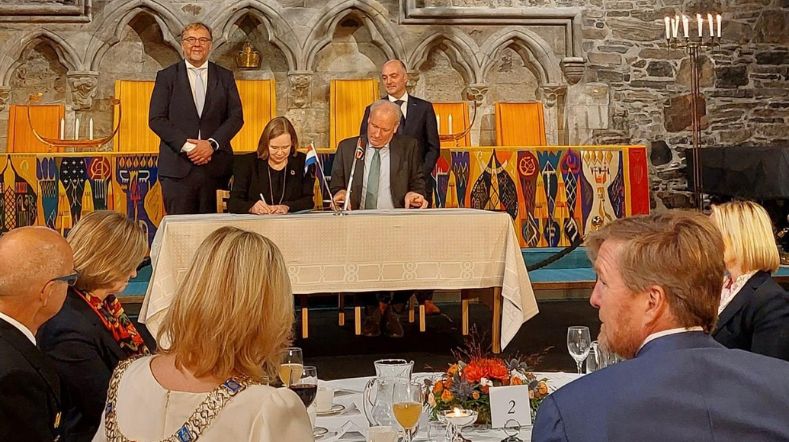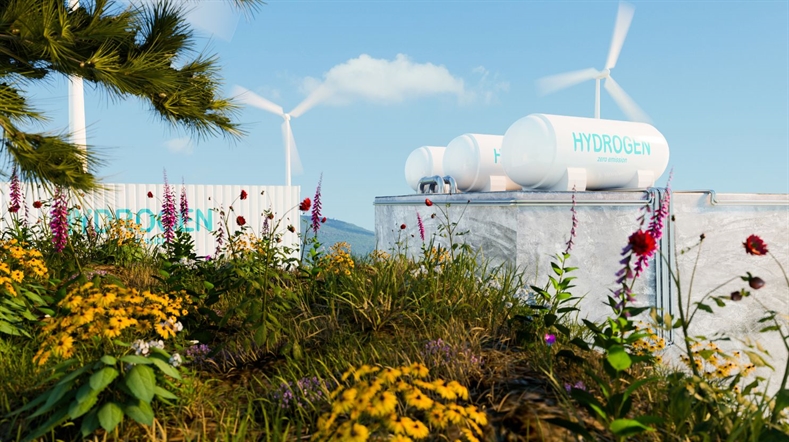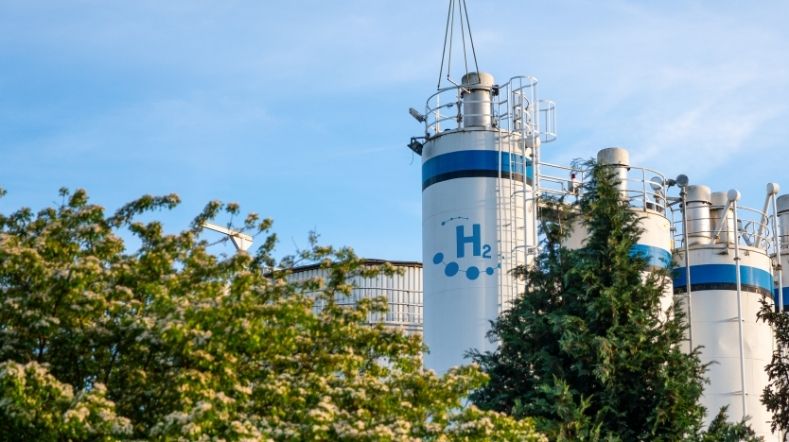
H-vision: blue hydrogen to accelerate carbon-low industry
Industry in the Rotterdam port area has strong ambitions to become more sustainable. By 2025, it aims to reduce CO2 emissions by two megatons through the use of CO2 capture and storage, rising to at least six megatons by 2030. That represents almost half of the 14 Mton reduction that the total industry in our country will have to achieve by 2030. Blue hydrogen plays a key role in this energy transition.
Most of the CO2 emissions during the production of hydrogen from methane is captured and stored in empty gas fields in the North Sea. TNO created and developed the H-vision concept to accelerate the realisation of these targets. A group of around fifteen parties is working with TNO to help shape this. The collaboration was established by the Deltalinqs business association, which represents about seven hundred companies in the main port of Rotterdam. The ultimate goal is a completely CO2-free industry in the port area, mainly through the use of green hydrogen. The blue variety is required as an intermediate step.
Easy to convert processes
The consortium, which includes large petrochemical and energy companies such as Air Liquide, BP, Gasunie, Shell and Uniper, has worked out various routes on the basis of technological knowledge from TNO. The two large, modern coal-fired power stations on the Maasvlakte can be partly converted to hydrogen to produce CO2-free electricity. In chemical and refining processes, which use a lot of grey hydrogen, the CO2 can be captured and stored in empty fields under the North Sea.
For refineries and factories with high-temperature processes, electricity is not very suitable, but hydrogen is. It has the advantage that many industrial processes are easy to convert from the commonly used natural gas to hydrogen. An additional benefit is that residual gases from the refineries can be used as raw material for the production of blue hydrogen.
Large, centrally located hydrogen plant
In order to realise the ambitions for blue hydrogen, a large-scale hydrogen and CO2 infrastructure is needed in the port area. Here H-vision hooks up with the existing Porthos project of the Port of Rotterdam Authority, Gasunie and EBN that provides a new system of pipelines to which companies from the port can connect in order to transport their captured CO2 to empty gas fields under the North Sea.
The H-vision plans include a large hydrogen plant on the Maasvlakte to feed the extra hydrogen demand of the industrial processes in the port area. The infrastructure of the Porthos project can be used to transport the CO2 captured here. For the transport of the blue hydrogen a new network of pipelines will have to be constructed through the port area.
Green hydrogen infrastructure
Together with the consortium, TNO has been investigating future supply and demand, the economic feasibility and the possibility of integrating blue hydrogen into current production processes. The envisaged infrastructure means that it will no longer be necessary to produce hydrogen per company and to capture the CO2. Each factory can be operated from one central location, which is more efficient and cheaper. TNO has calculated that up to 70% of the gas required for the production of blue hydrogen for use in refineries can be obtained from industrial waste gases. The need to import gas from abroad is therefore limited.
Another cost advantage is that the infrastructure can eventually be used for the storage and transport of green hydrogen produced from solar energy and offshore wind, which is expected to be available from 2030 onwards. In this way, H-vision paves the way for a green hydrogen economy and thus a low-carbon industry.
Download the H-Vision report
Want to know about H-Vision? Download the latest publication. (In Dutch)
Get inspired
NORCE and TNO are entering into a strategic partnership on hydrogen developments


Dutch consortium participates in EU research project on large-scale hydrogen storage in depleted gas fields


Underground hydrogen storage


Collaboration TNO and Elcogen for development Solid Oxide Electrification Technology in Europe


TNO explores PFAS alternatives with European partners


